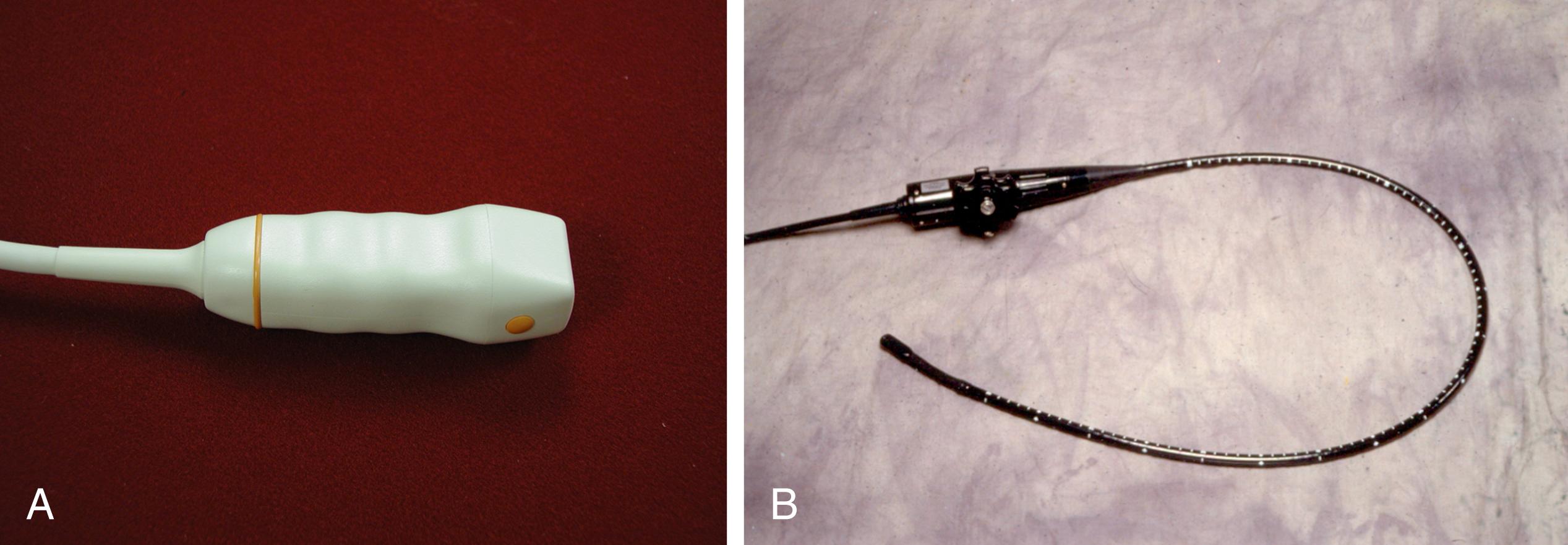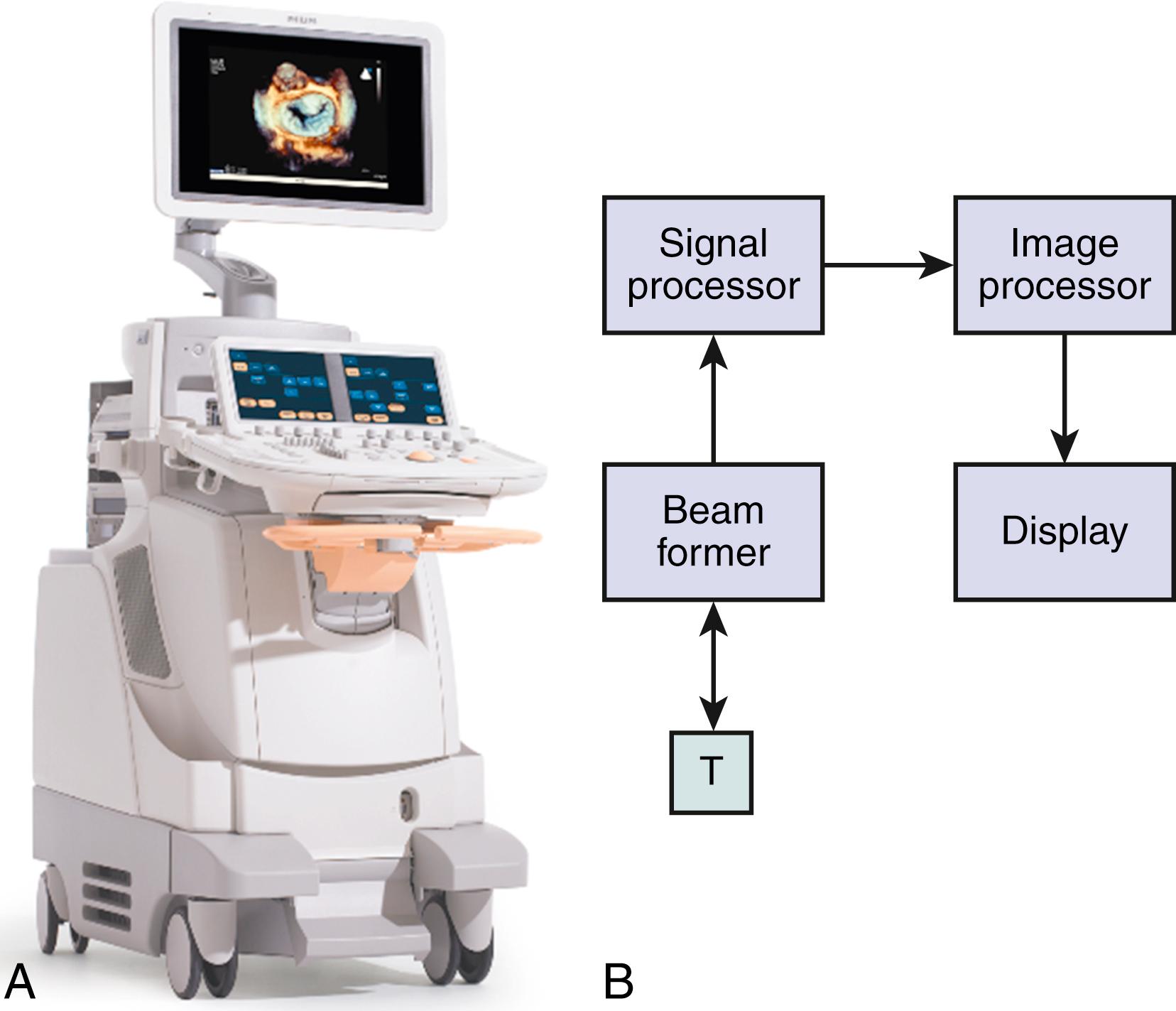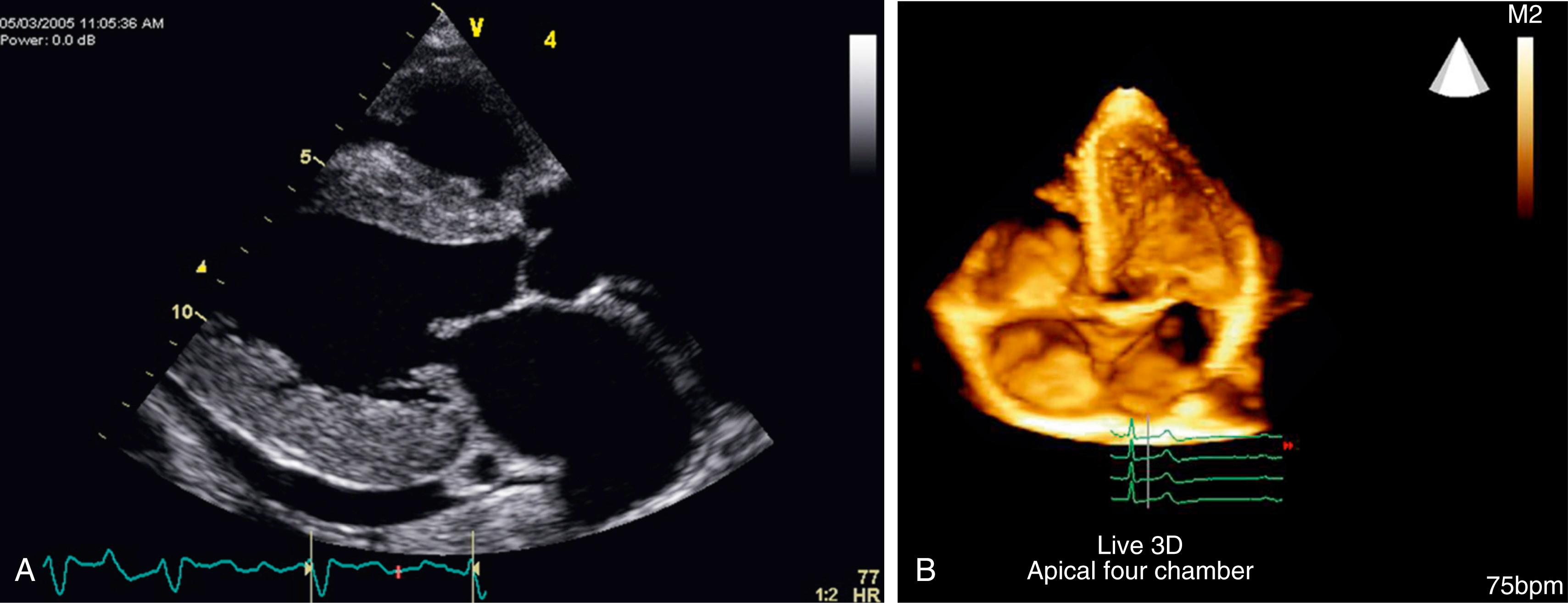Physical Address
304 North Cardinal St.
Dorchester Center, MA 02124
Echocardiography is diagnostic imaging with ultrasound (sonography) of the heart. Sonography comes from the Latin sonus (sound) and the Greek graphein (to write). Diagnostic sonography is medical, real-time, two-dimensional (2D) and three-dimensional (3D) anatomic, motion, and flow imaging using ultrasound.
Ultrasound is sound, a traveling pressure wave, of frequency higher than what humans can hear. Frequencies used in echocardiography range from about 2 MHz for adult transthoracic studies to about 10 MHz for higher-frequency applications such as harmonic imaging and pediatric and transesophageal studies. Higher frequencies produce images with improved detail resolution but with less penetration because the weakening of the ultrasound as it travels (attenuation) increases with increasing frequency. Ultrasound provides a live, noninvasive view of the heart. Echocardiography is accomplished with a pulse-echo technique. Pulses of ultrasound, two to three cycles long, are generated by a transducer ( Fig. 1.1 ) and directed into the patient, where they produce echoes at organ boundaries and within tissues. These echoes then return to the transducer, where they are detected and presented on the display of the sonographic instrument ( Fig. 1.2 ). The ultrasound instrument processes the echoes and presents them as visible dots, which form the anatomic image on the display. The brightness of each dot represents the echo strength (amplitude), producing what is known as a grayscale image . The location of each dot corresponds to the anatomic location of the echo-generating object. Positional information is determined by knowing the path of the pulse as it travels and measuring the time it takes for each echo to return to the transducer. From a starting point at the top of the display, the proper location for presenting each echo is determined. Because the speed of the sound wave is known, the echo arrival time can be used to determine the depth of the object that produced the echo.


When a pulse of ultrasound is sent into tissue, a series of dots (one scan line, data line, or echo line) is displayed. Not all of the ultrasound pulse is reflected from any single interface. Rather, most of the original pulse continues into the tissue and is reflected from deeper interfaces. The echoes from one pulse appear as one scan line. Subsequent pulses go out in slightly different directions from the same origin. The result is a sector scan (sector image), which is shaped like a slice of pie ( Fig. 1.3A ). The resulting cross-sectional image is composed of many (typically 96 to 256) of these scan lines. For decades, sonography was limited to 2D cross-sectional scans (or slices) through anatomy such as that in Fig. 1.3A . 2D imaging has been extended into 3D scanning and imaging, also called volume imaging, as described in Chapter 2 . This requires scanning the ultrasound through many adjacent 2D tissue cross sections to build up a 3D volume of echo information (see Fig. 1.3B ), like a loaf of sliced bread in which each slice represents a 2D image and the loaf represents the 3D volume.

Become a Clinical Tree membership for Full access and enjoy Unlimited articles
If you are a member. Log in here